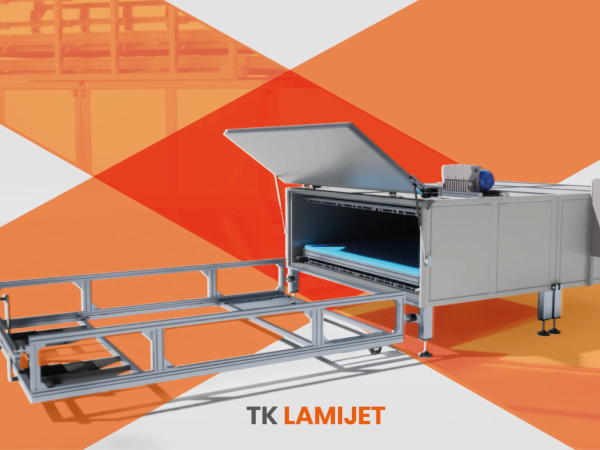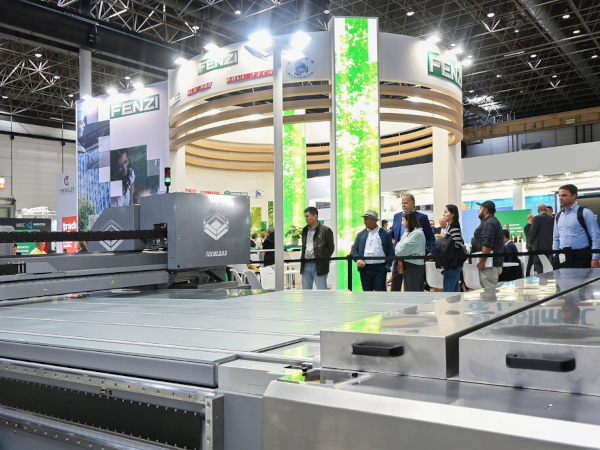Date: 6 October 2015
Some applications, such as exterior aircraft lighting, can push a material to its limits. Exterior aircraft lenses are exposed to smog, dust, and other air pollutants at very high speeds; the resulting impacts can degrade the lens surface, sometimes to the point where they are no longer able to meet transmission requirements.
Proper material selection for a lens, filter, or other optical system component is crucial for successful product design. The material’s physical properties determine its ability to resist damage and prevent failure. In this article, we review glass’ mechanical and chemical properties, including elastic moduli, strength, hardness, impact resistance, and chemical resistance, and demonstrate their effect on different applications.
.jpg)
Stress, Strain, and Elastic Properties
You may be surprised to learn that glass is an elastic material on the atomic level. This means that under stress, glass will deform due to the nature of its atomic bonding structure. However, this change is not permanent and when the stress is removed, the glass reverts to its original form. The stress on a glass is defined by force applied to a unit area,

Applied stress can be homogeneous, meaning even across the entire glass sample, or there can be a stress gradient where one area experiences more stress than another area. The strain, e, describes the deformation of the glass. It is the fractional change in length due to compression or tension stresses,

The elastic nature of glass is described by its elastic moduli. These moduli tell you a lot about how much a glass will deform under stress and in what direction it will deform. They are defined by the relationships between different directional elements of stress and strain. Three important and commonly used elastic moduli are Young’s modulus, Poisson’s ratio, and the Shear modulus.
Young’s modulus: Y = σx / ex
The modulus Y is a measure of the stiffness of a glass. Larger values of Y indicate stiffer glasses which will not deform as much under applied stress.
Poisson’s ratio: ν = -ey / ex
Poisson’s ratio, v, indicates the relationship between elongation and contraction of a material when stress is applied in one direction. The material will typically elongate in length in the direction of the applied tensile stress and contract in dimension in the perpendicular direction.
Shear modulus: G = σxyexy
The shear modulus, G, relates shear stress and shear strain. It is an indication of the rigidity of a glass.
Since glass is an isotropic material, which means that the bulk properties are independent of direction (unlike many crystalline materials), if you know at least two of the previously mentioned elastic moduli you can determine any of the others.
Application:
It’s important to understand that while glass is elastic in nature on a microscopic level, it is also a very stiff material on the macroscale. This means that for typical stresses applied to glass, the resulting strain is very small. So for most applications, stress applied to a glass piece will not cause it to shift out of its dimensional specifications.
But knowledge of Young’s modulus can be very useful in predicting the strength or impact resistance of a glass piece. Say you are designing a lens that needs to withstand large pressures without breaking, such as an exterior submarine light. Or you’re designing a runway lens that will be exposed to impact from gravel and hail. All other things held equal, a glass with a higher Young’s modulus is a better choice, since it will be more resistant to failure from both consistent pressure and sudden impact. This will be discussed in more detail in the following sections.
Strength: How to Withstand Stress
The strength of a material is the amount of stress that it can withstand before fracturing. For a perfect theoretical glass, the strength is defined as

where γf is the energy of the fractured surface, Y is Young’s modulus, and a0 is the distance between atoms in the glass. This typically ends up being on the order of GPa (gigapascals (109 Pa). In practice, however, glasses typically have strengths much lower, in the range of 14-70 MPa (megapascals (106 Pa). This is because no glass is as perfect as theoretically possible and small flaws are always present in real glass structures. Accounting for these imperfections, the strength is rewritten as

where c is the size of the flaw. The strength is greatly reduced for flaws larger than the interatomic distance a0. Even if the flaw is as small as 4 microns, the strength is decreased by approximately a factor of 200.
For most finished glass products, including polished glass, molded glass, and float glass, surfaces are finished to a quality on the order of microns. What this also means is that there are flaws present on the glass surface with a size of about a micron. Surface finish, then, is one of the reasons why the actual strength of a glass is on the order of MPa.
Application:
When selecting glass as the material for your application, knowing the strength of the glass will help ensure it can withstand applied stress and meet specific pressure requirements.Glassware used in naval applications such as navigation, warning, or signal lights must pass hydrostatic pressure tests according to the military standard MIL-DTL-24560A. For example, the glass lenses installed in exterior submarine lighting are required to withstand pressures of 10-15MPa.
Glasses most commonly fail from flaws at the surface when tensile (think pulling apart) stresses are applied. To test the strength of a glass, the ASTM C158 Standard: Test Methods for Strength of Glass by Flexure is often used. This method uses a three or four point bend test to determine the strength of a glass and can be used to predict application strength. Should a glass need the ability to withstand greater stress, chemical and heat strengthening processes can be used to increase its strength.
Hardness: How to Withstand Abrasion
Hardness is the ability of a material to resist being scratched, fractured, or permanently deformed by the sharp edges of another material. In other words, it is a measure of a material’s resistance to abrasion. While you might sometimes hear strength and hardness discussed interchangeably, they are in fact separate properties. Strength refers to the resistance of a bulk material to applied pressure, while hardness refers to the resistance of a surface to small, sharp projectiles.
You can measure the hardness of a glass by using a scratch test (Mohs scale) or an indentation test (Vicker’s hardness). However, both of these tests are performed only at single points on a material’s surface. Often it is more useful to measure the abrasion resistance of an entire surface. The Taber method is often used to determine the abrasion resistance of an entire surface, where two rough wheels rotate on either side of the material and simulate abrasion. The falling sand test is another common abrasion resistance test, where the surface of a material is struck with sand, silicon carbide, or other small particles, at known quantities and rates to gage abrasion resistance. Watch our video below to learn more about abrasion testing and how different materials compare.
Application:
Glass lenses that are installed in outdoor environments, such as exterior aircraft lighting, are often subject to abrasive conditions. When designing a lens for such a harsh environment, it is important to know how the surface of your material will wear, since abrasion can adversely affect performance. For example, when the surface of a transparent material is scratched, light transmission decreases. When the surface accumulates enough scratches, the part could shift out of the required optical specification range. It’s also critical to remember that small surface flaws created by abrasion can affect the strength of the glass lens and lead to premature failure, as we discussed in the previous section.
When designing for an application that requires high strength, high transmission, and abrasion resistance in the face of extreme conditions, it is best to choose a hard glass. Watch the video below or read our blog article to learn more about the effects of abrasion on transmission and to see how glass offers significantly higher abrasion resistance compared to other materials like plastics.
Impact Resistance
Glass is often required to withstand not only continuous stress or surface abrasion, but also impact. Impact is typically defined as a large force that is applied instantaneously to one spot on the material. Glasses are said to be resistant to impact if they retain their surface quality and also resist fracture.
Impact resistance is improved with higher values of strength, hardness, and toughness. A material can be strong and tough but not necessarily hard, meaning that an impact would mar the surface but not break the material. Or conversely, the material could exhibit high hardness but not be strong and tough, meaning that an impact would not abrade the surface but the material could still fracture internally. In contrast to other materials, glasses are typically strong, hard, and tough, which leads to high impact resistance. Additionally, heat strengthening and chemical strengthening mechanisms can be used to further improve upon the inherent impact resistance of the glass.
Application:
The impact requirements of a glass part depend strongly on its application; a glass fit for one application may fail in another. Pebbles and gravel are often kicked up on the airfield runway by an airplane’s wheels; runway lighting systems must be able to withstand these impacts without failure. In contrast, in-ground pavement lights are subject to different environmental impacts and as a result, have different impact requirements.
Commonly, lenses or glass components may need to adhere to specific impact requirements or standards for their application. For example, a glass lens for a helipad light must adhere to MIL-DTL-24560A(SH) and be able to withstand impact-without damage-from a three pound steel ball dropped on the center of the glassware from a height of two feet. Meeting this and similar standards, requires the proper combination of lens design, glass composition selection, and additional heat-strengthening processes.
Chemical Resistance
The chemical resistance of a glass is a measure of its durability when it is exposed to or immersed in applicable chemicals. It is important to understand how glasses react to acids and bases, but it is equally important to know whether they degrade in water or even due to humidity in the air. Typically, only the surface layer of a glass is affected by exposure to water or other liquids, but some of the more exotic glass compositions, such as phosphates or chalcogenides, can degrade or even dissolve over time due to humidity in the air.
Most commercial glasses, including silica, soda lime silicates, and borosilicates, have high chemical durability. This is due to these glasses having strong bonds between atoms and high network connectivity. For less durable glass compositions, like phosphates or chalcogenides, degradation occurs when the glass is exposed to a chemical that causes the weaker network bonds to break.
There is no hard and fast rule when it comes to performing chemical durability tests. Glasses can be immersed in water, acids, bases, or any other fluid of interest. Measurements can be done on bulk or ground glass samples. Tests can be closed, where the liquid is constant, or open, where the liquid (and dissolved glass) is continually replaced. Weathering tests can also be performed, where glass is exposed to water vapor and weight loss is measured. So when reviewing design specifications, it is important to know and determine appropriate test parameters in order to fully understand a glass’ ability to withstand applicable chemical attack.
Application:
Before you can select a material for an application, you need to know what environmental conditions it will be exposed to. For example, exterior aircraft lenses can be exposed to a variety of harsh chemicals such as deicing fluids, petroleum based fuels, hydraulic fluids, and air pollutants. Materials chosen for these lenses must be highly resistant to these chemicals in order to prevent degradation and failure. In another example, lighting fixtures installed in coastal regions are often exposed to high humidity and air salinity. To reduce constant lens replacement and maintenance costs, it is best to choose a material-like glass-that will weather well and retain high transmission.
In some stringent applications, the lens or filter material may be required to withstand certain environmental conditions, such as resistance to humidity. For example, glasses used in night vision imaging system (NVIS) applications need to meet the humidity test outlined in MIL-STD-810E. Here, the surface degradation of a glass is tracked as a function of time and relative humidity at a constant temperature.
Mechanical Properties: One Part of the Design Equation
The mechanical properties of a material play a critical role in the success of a lighting system. A material’s strength, hardness, abrasion and impact resistance, as well as chemical resistance, should be considered when selecting a material for your application.
However, it’s not always easy to determine which material is best. Besides these mechanical properties, the optical and thermal properties of potential materials should be considered during the design phase of the lighting system. Where one material may be strong in physical performance, it might not meet the necessary thermal requirements for the application. An understanding of the relationship between these properties and their impact on product design will help you develop successful lighting systems.
About the Author
.jpg) Adam Willsey Adam joined Kopp Glass in 2009 after graduating from the NYS College of Ceramics at Alfred University with a BS in Biomedical Materials Engineering. In 2013, he completed his MS in Materials Science from Alfred University. As the Manager of Research and Engineering, Adam works closely with our engineers and production team to develop new glass compositions that meet our customer's color and transmittance requirements, while ensuring efficiency.
Adam Willsey Adam joined Kopp Glass in 2009 after graduating from the NYS College of Ceramics at Alfred University with a BS in Biomedical Materials Engineering. In 2013, he completed his MS in Materials Science from Alfred University. As the Manager of Research and Engineering, Adam works closely with our engineers and production team to develop new glass compositions that meet our customer's color and transmittance requirements, while ensuring efficiency.










Add new comment